As an American living in the Netherlands, it’s been fascinating to discover the key locations for the Pilgrims in the Netherlands. Although not everyone realizes that the Pilgrims lived in Leiden, you can visit many of the key locations relevant to them. I include some history of the Pilgrims in the Netherlands as well as the addresses of where to go! 2020 marks the 400th year when the Pilgrims departed on the Mayflower to the Americas!
Contents
Why were the Pilgrims in Leiden?

The Pilgrims were Christians from England who were dissatisfied with the Church of England. They were very vocal in their opinions, resulting in persecution from King James I. In 1593, independent congregations were banned in England, however, this did not stop the Puritans from running their own services in secret.
The most famous instance of these services was in Scrooby, Nottinghamshire. Services went on for three years, but due to the Protestant Reformation in the Netherlands, the Puritans decided to head to the Netherlands to start over where they could practice in peace. (At this time, Catholics were heavily sanctioned with their own secret churches.)
At the time, Leiden was considered a city of free thinkers and tolerance. When arriving in Leiden, the Pilgrims were told: “No honest persons will be refused free and unconstrained entry to the city to take up residence.” The Pilgrims settled near the Pieterskerk, Leiden’s beautiful Gothic cathedral, and settled down in Leiden. The Pilgrims spent about twelve years living and working in Leiden.
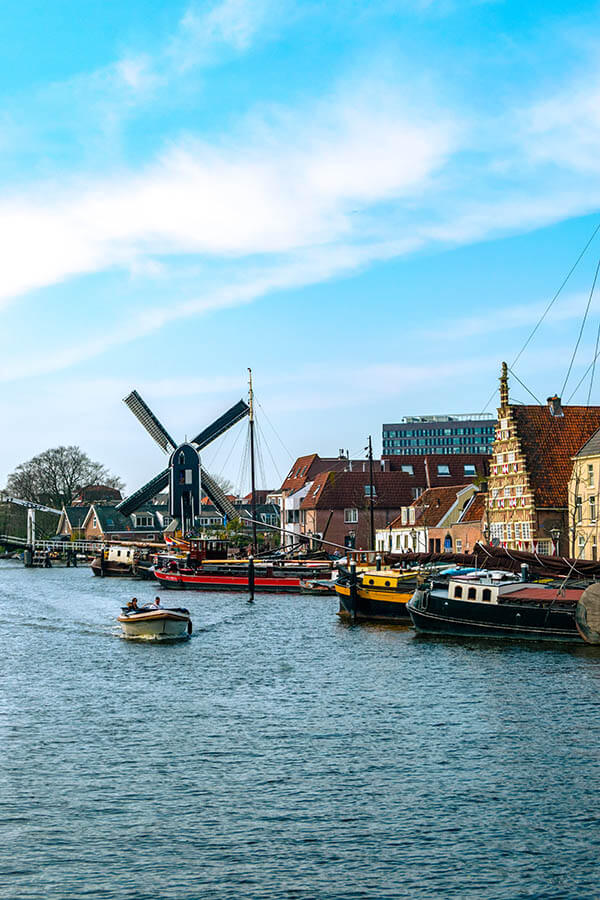
Why did the Pilgrims leave Leiden?
It’s important to remember that immigration in the Netherlands is fairly normal and English is widely spoken, however, this was not the case in the 1600s. After twelve years in Leiden, the Pilgrims were concerned about integrating too much into Dutch life. (Some Pilgrims remained in Leiden to live out their lives.)
The Netherlands had already once been invaded by the Spanish who imposed Catholicism on many cities in the Netherlands. The influence of this invasion is still felt in many parts of the Netherlands where Catholicism is more prominent (e.g. Brabant and Zeeland). In 1618, the truce with the Spanish was on the verge of ending. Leiden is a city where the Spanish had been gleefully ridden out by the residents (it’s still celebrated each October), however, there was no guarantee that the Spanish would not invade again
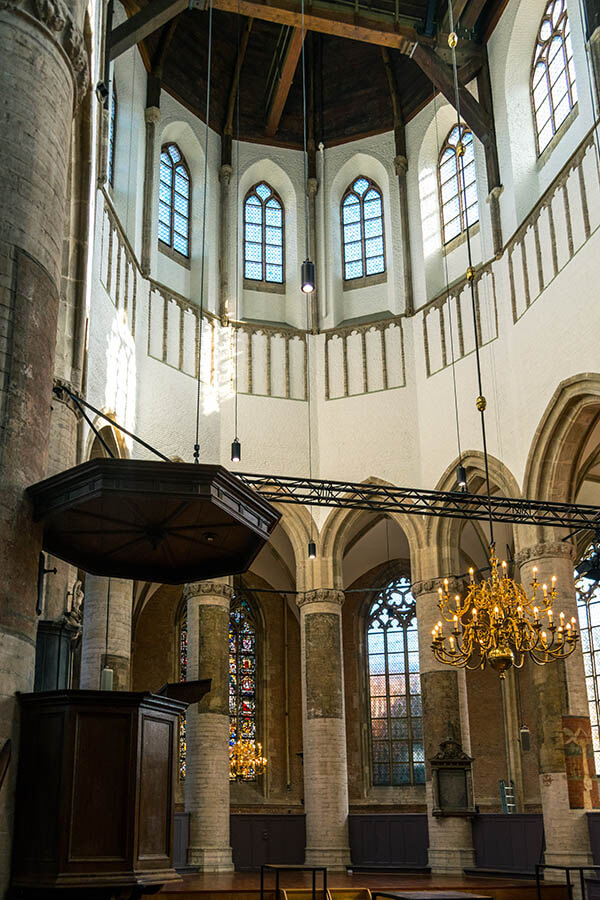
Similarly, the Pilgrims found life in the Netherlands difficult. As a foreigner myself, it’s not always easy to find the comforts of home abroad. Historians have argued that the Pilgrims missed their more diverse diet, which included meat. Similarly, employment in the fabric industry (a big industry for Leiden) was dominated by entrepreneurs who controlled quite a bit of the city and without work, the Pilgrims would become destitute.
In 1618, a portion of the Pilgrims in Leiden moved back to England in preparation for departing for the Americas. There were some mixed reports about early settlements in the Americas, but they chose to take the risk. The Pilgrims hoped that England would finally allow them to practice their religion in peace in the New World, however, they required some help with funding this journey. Ships, including the Mayflower (1620), were funded by merchants who were promised some of their goods after settlement. The Pilgrims arrived in the Americas and established Plymouth. Needless to say, the rest is history. 😉
Key locations for the Pilgrims in Leiden
Pieterskerk
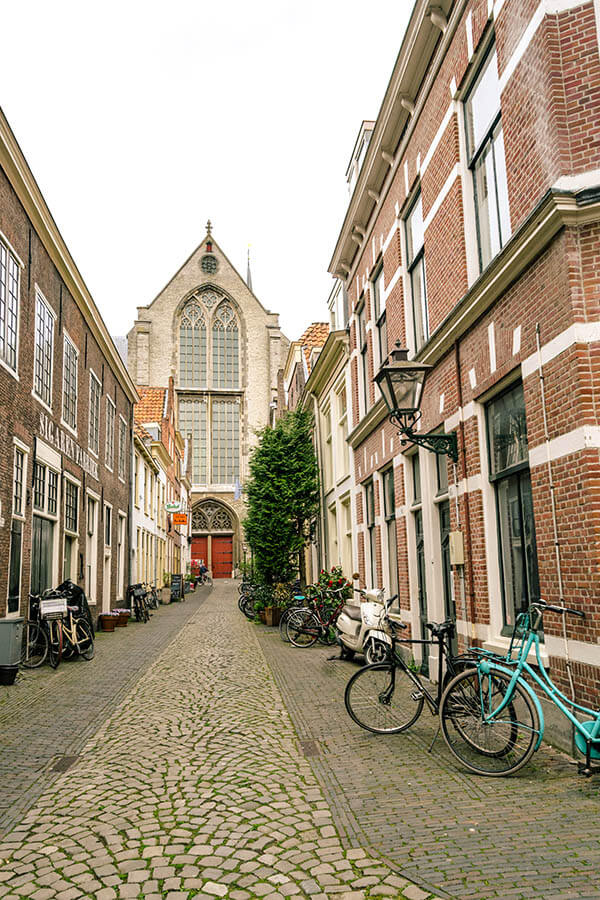
The Pieterskerk is one of the gems of Leiden. This beautiful church dates back to 1121 when it was rebuilt in the spot of another chapel. It took almost 200 years to build the church,
Protestant church services were attended by John Robinson, one of the Pilgrim Fathers buried within the church, as well as numerous influential Dutch figures. It’s a must-visit location for those interested in Pilgrim history and you can see the plaques dedicated to their journeys. Mathematician Snellus is even buried inside.
On a normal day, admission costs a few euros for entry into the Pieterskerk, which is now an events space. Thanksgiving services are held each Thanksgiving in English at the Pieterskerk if you wish to attend! Address: Pieterskerkhof 1.
Click for more information about visiting the Pieterskerk
Site of the printing press
On one of Leiden’s most popular street for boutique shops in the Pieterkwartier, you’ll find a street where the Pilgrim Press once sat. Today, there’s nothing there, however, there’s a plaque over the doorway to this street dedicated to William Brewster who preceded over the printing press. Following persecution from the English, the printing press here closed in 1619. Luckily, Brewer was able to escape. Address: William Brewstersteeg.
John Robinson’s former home
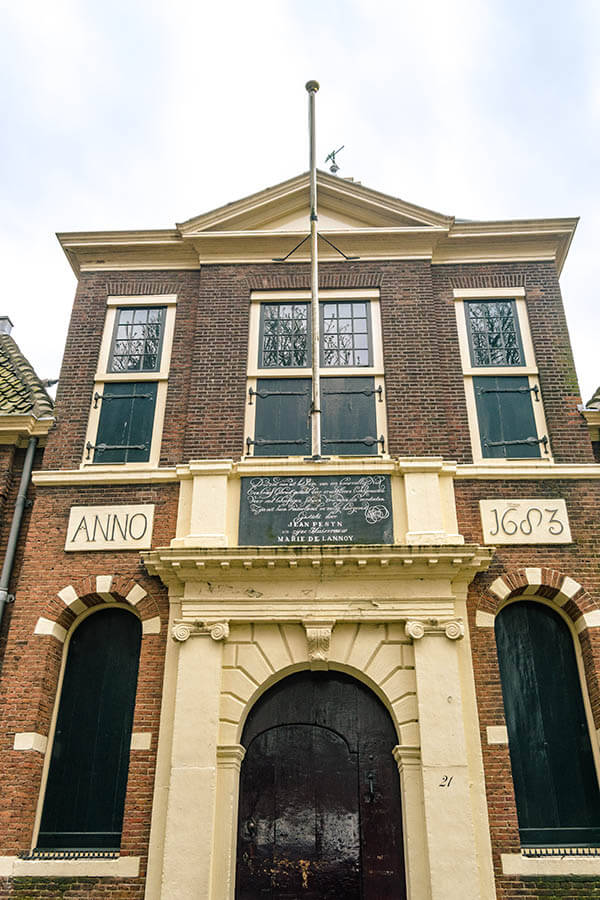
This beautiful courtyard is one of my favorite places in Leiden to briefly visit. It’s long been the home of members of the Wallonia Church, who were allied to the Pilgrims. This peaceful courtyard (behind a heavy door) can be found at Kloksteeg 21. Please be quiet as this is a privately owned residence.
Leiden American Pilgrim Museum*
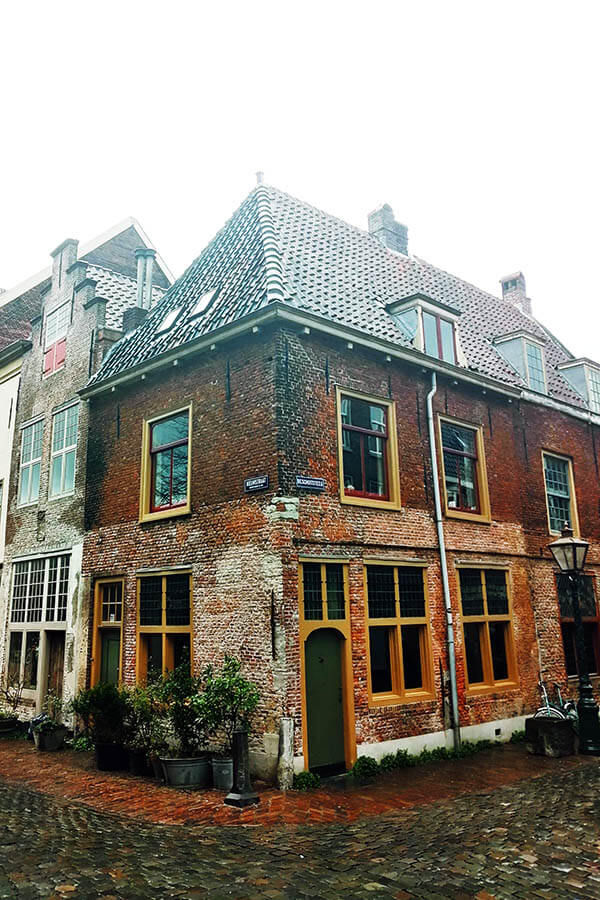
Let’s be clear that this location is not original,
Note: When departing the Netherlands, the Pilgrims departed from Delftshaven, which is now located in Rotterdam! This beautiful town was a port for ships, however, it has only been recently added onto Rotterdam. It’s worth a visit for history lovers as its curator is one of the world’s experts on Pilgrims. Address: Beschuitsteeg 9.
Have you visited the Pilgrim sites in Leiden?

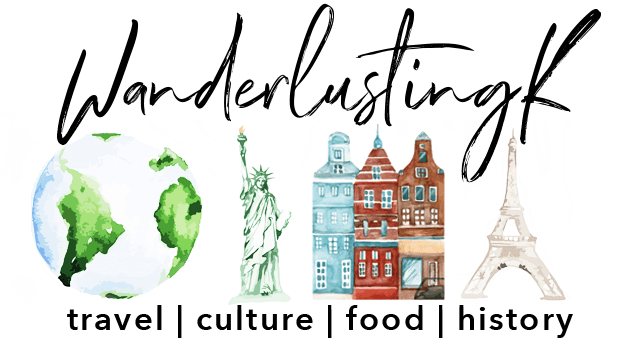
Thank you so much for this information and history. I look forward to seeing Europe, and Leiden, someday!
> the Pilgrims were concerned about integrating too much into Dutch life.
The people you are talking about were Puritans. The Pilgrims (aka Pilgrim Fathers) were the English settlers who came to North America on the Mayflower. The reason they left Leiden was that the very acceptance they went there to find was in direct conflict their faith.
The puritans were a separatist cult who wanted to live in a theocracy of only other puritans. Their communities were built around the idea of religious intolerance. Each community of puritans in New England had their own faith based Covenant which was a set of rules that everyone had to swear to uphold in order to live in one of those communities. The early puritan covenants (such as the one in Salem) were especially strict. So strict that eventual actions which extended near automatic membership into the Salem covenant … to the members of other far more lenient covenants, This created conflict and mistrust among the already xenophobic & religiously intolerant people in Salem. Remember that the puritans gave the world the Salem Witchcraft Hysteria.
I’m sorry Ken, but as an historian in American history, I must take exception to several of the points you make in your previous comment.
Firstly, there was no singular Puritan movement. The Pilgrims, whose name was pinned to them much later, not until well into the 19th century in fact, and who never called themselves pilgrims, began as Calvinist Puritans. Other Puritan reformers included Presbyterians, Baptists, Brownists, Mennonites, Quakers, etc. Some of these groups would break away from the ‘puritan movement’ to then be labeled as separatists, meaning that they had given up on reforming the church of England from within, and wanting to form their own separate church. Today, the terms Puritan and Separatist are generally used interchangeably.
Secondly, Puritanism was not a cult. The roots of Puritanism are to be found in the beginnings of the English Reformation, and the name “Puritans” (they were sometimes called “precisionists”) was a term of contempt assigned to the movement by its enemies. Although the epithet first emerged in the 1560s, the movement began in the 1530s, when King Henry VIII repudiated papal authority and transformed the Church of Rome into a state Church of England. For Puritans, the Church of England retained too much of the liturgy and ritual of Roman Catholicism, which in their argument, lacked Biblical basis and authority. Hardly the definition of cultism.
Lastly, ‘witchcraft hysteria’ did not have its beginnings in Salem, or even New England for that matter, which you imply at the end of your comment. Witch hysteria took hold in Europe during the mid-1400s, long before the reformation movements of the 1500s, or the settling of New England colonies in the 1600s. During the European witch hunts, thousands of accused witches, usually under the strains of being tortured or simply with the threat of torture, confessed to a variety of wicked behaviors. Within a century, witch hunts were common and most of the accused were executed by burning at the stake or hanging. Single women, widows and other women on the margins of society were especially targeted.
The publication of “Malleus Maleficarum”—written by two well-respected German Dominicans in 1486—likely spurred witch mania to go viral. The book, usually translated as “The Hammer of Witches,” was essentially a guide on how to identify, hunt, and interrogate witches.
Between the years 1500 and 1660, up to 80,000 suspected witches were put to death in Europe. The Salem witch trials beginning only in February, 1692 and ending with the last of the trials in May of 1693, spanning a brief 15 months, sent a total of 14 men and woman to the gallows. A far cry from the 80,000 killed in Europe.